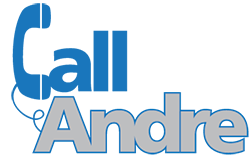
09 Feb A Bigger Downpayment Doesn’t Always Mean a Lower Rate!
If you’ve been following the financial news in Canada lately (or if you read the blog here regularly), you will know that a lot is changing in the world of mortgage financing. Most recently, the Canadian Mortgage and Housing Corporation (CMHC) announced an increase in their insurance premiums that will come into effect on March 17th 2017. And although we are still in early February, the impacts of this change are already being felt.
One of these impacts; as odd as it may sound, is that coming up with a larger downpayment doesn’t necessarily mean you will be able to secure a mortgage with the lowest interest rate available on the market. In fact, in today’s market, borrowers with a 5% downpayment are actually being favoured to borrowers with a 20% downpayment and can access mortgage products with a little lower interest rate. But it’s all really a matter of optics, here is what is really going on!
High ratio mortgages (less than 20% downpayment) are required to have mortgage default insurance in place. This cost is incurred by the borrower and usually included into the cost of the mortgage. So, let’s say you have a 5% downpayment, with the latest CMHC premium increase, you would be paying a 4% insurance premium. That is a significant amount of money added to the mortgage.
Conventional ratio mortgages (more than 20% downpayment) are not required to have mortgage default insurance in place, however a lot of lenders opt to insure these mortgages anyway. The cost to insure the mortgage is incurred by the lender as a cost of doing business. This is where the change has taken place, with the latest increase in premiums to insure mortgages, it has just gotten a lot more expensive for lenders to insure their mortgages against default. This is a cost that they can’t pass along to consumers as a fee like what happens with high ratio mortgages (that would look really bad), so they simply increase the mortgage rate to make up the difference.
This leaves the market in a very interesting (and sometimes confusing) spot. It would seem that the less money you put down, the better rate you are able to secure. However that isn’t really the case, it’s just that the cost of the default insurance is being paid as a fee added to the mortgage, instead of being an additional cost to the lender that has been included in the sticker price of your mortgage.
Now, if we are being honest, rates are really good right now, we are at near all time historic Canadian lows. Comparatively, any rate today is a good rate! If you want to discuss your options, look at all the numbers, and figure out the best mortgage product for you, please don’t hesitate to contact me anytime!

